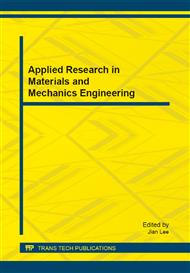p.107
p.113
p.120
p.124
p.130
p.137
p.143
p.148
p.157
Modeling and Characteristics Investigation on a Load Control Valve
Abstract:
In this work, a new solution of load control valve based on a hydraulic coupling two-stage principle is proposed. A detailed mathematical model of the valve has been developed. According the model, the steady-state and dynamic characteristics have been studied. The steady state study shows that the valve has an ideal piloted opening function which is not affected by the load pressure or back pressure alteration. Through an insightful analysis based on the linearized model, the dynamic study reveals that the main stage respond as a 1st order model which is smooth and fast enough compared to the pilot stage, while the pilot stage can be simplified as 2nd order model which may cause a problem of oscillation or overshot. The transition response of the valve is mainly decided by the pilot stage. Through the study of various parameters, the diameter of the orifice on the pilot piston shows its efficient influence in adjusting the poles in the pilot stage without affecting the steady state operation of the valve. An optimization based on root locus method is implemented and the poles have been deployed to the fastest points without oscillation.
Info:
Periodical:
Pages:
130-136
Citation:
Online since:
August 2014
Authors:
Keywords:
Price:
Сopyright:
© 2014 Trans Tech Publications Ltd. All Rights Reserved
Share:
Citation:


